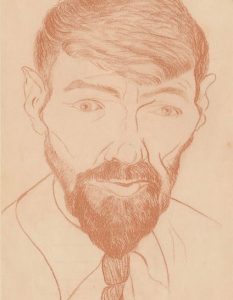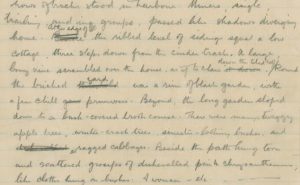March 24, 2022, by Kathryn Steenson
What is ‘censorship’?
This is a guest post by Gregory Walker, Midlands4Cities Doctoral Student.
‘I would emphasize, first of all, that there is in England no censorship of books’.[1] These were the words of Home Secretary Sir William Joynson-Hicks in the same year (1929) that he seized two typescripts of D. H. Lawrence’s poetry collection, Pansies, in the registered mail and frightened Lawrence’s English publisher, Martin Secker, into removing fourteen poems from the volume. Lady Chatterley’s Lover, which Lawrence had privately printed in Florence the year before, would remain contraband in Britain until the famous trial of 1960. How, then, could Joynson-Hicks ever hope to convince anyone that there was no literary censorship in England?
A conflict of terminology:
Joynson-Hicks’ claim seems absurd from a modern perspective, but it had a rationale. Books, unlike plays, did not require the approval of a government authority before they could reach the public. For Joynson-Hicks, this was the only form of restriction which could qualify as ‘censorship’. He did not recognise judicial action after publication as anything more than the punishment of a crime, and certainly would not have acknowledged the censoring role of non-state agents such as publishers and editors. At the same time, Joynson-Hicks was widely reviled among journalists and the literati of his time as being the most prudish Home Secretary in living memory. He was instrumental in the censorship and prosecution of several works, including, for instance, Radclyffe Hall’s The Well of Loneliness.

Self portrait by D.H. Lawrence taken from the frontispiece to: Lawrence, D. H. (David Herbert), 1885-1930. Pansies. [S.l. : s.n.], 1929 (London : P.R. Stephenson).
Lawrence’s experience of censorship:
For Lawrence, the issue of censorship was evidently a far broader one than Joynson-Hicks would acknowledge. As a writer whose work was frequently mutilated by editors and publishers, or rejected by libraries for being too explicit on sexual matters, state action was merely the tip of the iceberg. The ‘censor-morons’ Lawrence critiqued throughout his career were diverse and their influence was insidious.[2] The bulk of his work remained textually corrupt until well after his death. At the same time, Lawrence was not simply a passive victim of censorship, but instead reacted against it in his novels, essays, poems, and his management of publication strategies. The exact influence of censorship on Lawrence’s work is complex, and the task of ‘Editing D. H. Lawrence’ remains a difficult one.
The themes of censorship and Lawrence’s relationship with his editors and publishers ‘Editing DH Lawrence’ exhibition runs until the 29th May in the Weston Gallery, Lakeside Arts. For information about visiting, tickets to the programme of events, and exclusive online content, visit the exhibition website.
[1] Viscount Brentford, Do We Need a Censor? (London: Faber & Faber, 1929), p.9.
[2] D. H. Lawrence to Morris Ernst, 10 November 1928. The Letters of D. H. Lawrence, Vol. VI, eds James T. Boulton and Margaret H. Boulton with Gerald M. Lacy (Cambridge: Cambridge University Press, 1991), p. 613.
No comments yet, fill out a comment to be the first


Leave a Reply